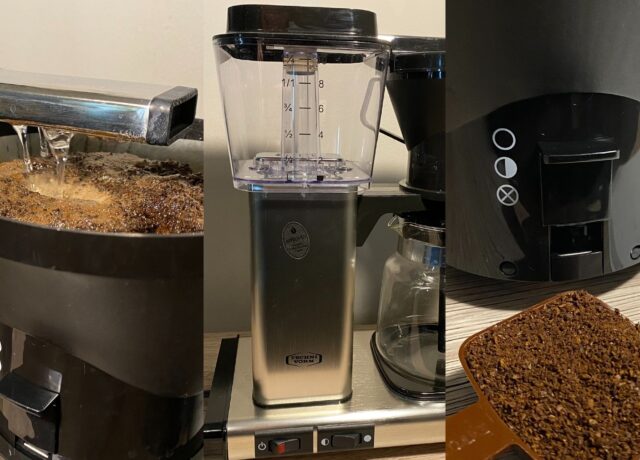Zambia is located in South-Central Africa (although some people consider it to be part of East Africa) and is landlocked. After years of colonization, in 1964 Zambia (formerly Northern Rhodesia) finally became independent of the United Kingdom. Its name is derived from the Zambezi river, which is believed to mean “Great River”.
Most of Zambia is savanna woodland, and so most of its population is centered around Lusaka – the country’s capital city – and the Copperbelt Province since these are both core economic hubs. This is also where the coffee industry is to be found.
Where is it grown? How does it taste? And is it worth pursuing its potential?
How Did It Start?
Coffee in Zambia started late – much later than its neighbors Malawi and Kenya. In the 1950s coffee was introduced to Zambia through cultivar seed stock from Kenya and Tanzania.
In the 1970s projects were begun which searched for the best practices for both irrigated and rain-fed fields. This was so small-holder coffee farmers could be brought into the coffee sector which would increase the production of coffee. The aim was to establish 600 new coffee farms.
After only a few years over 1,000 small-holder coffee farms had been started, but it was only in the 1980s that Zambian coffee was produced seriously.
In 1984, the International Coffee Organization (ICO) granted the country a coffee export quota of 350 tons. A year later in 1985 – for the first time – coffee was officially exported from Zambia.
Where It’s Grown
Zambia coffee beans are grown primarily around the area of the city of Lusaka, as well as the Northern District of the Muchinga Mountains.
The three regions within this Northern District are:
- Nakonde
- Kasama
- Isoka
The Isanya and Kateshi coffee estates are located in the North of Zambia and cover a combined area of 2,438 hectares of land. 1,277 of these hectares are planted with coffee.
The Northern province of the country has the best conditions for the cultivation of coffees because of its proximity to the equator. Mafinga Hills – located between Zambia and Malawi – is the highest point in the country: the coffee there is grown at 2,300m.
But Sometimes It’s Not High Enough
Unfortunately, some of Zambia’s coffee-farming areas have relatively low altitudes which often results in a more lackluster and characterless flavor profile. This is due to high elevations affording the coffee plants more time to develop their flavors: a high altitude bean will be much denser and packed full of the best tastes.
That’s not to say that all of Zambia’s coffees suffers from a complete lack of elevation, but when its paired with frequent droughts and poor soil management, the quality of Zambian coffee will suffer.

Lacking Incentive
Although the coffee market is booming, the potential next generation of Zambia’s coffee farmers is not very interested in cultivating the caffeinated crop.
Very few farmers are willing to invest substantially in the Zambian coffee industry as there are too many financial implications involved in doing so.
In 2018 an appeal was made to Zambia’s government and other powerful financial institutions to work together to create attractive conditions that will persuade young entrepreneurs and eager farmers with the credit facilities that will enable them to invest in the specialty coffee market.
Its believed that particular progress could be made in Northern Zambia, where there are large bodies of water, better rainfall, and favorable climate conditions. There is an abundance of space that is available for the next generation of Zambian single-origin coffee farmers.
Well, How Does It Taste?
Unlike other African coffee, Zambian coffees tend to generally of lower acidity and softer, less-intense drinking experience.
At its best, Zambian coffee has a fantastic full body and a bright taste. A medium roast is ideal to achieve the best taste possible.
Having your coffee at a medium roast will ensure that your coffee doesn’t have unappealing acidity while also balancing the natural flavor and aroma. Yum!
Issues With Shipping Lead To Issues With Flavour
It’s thought that Zambian coffee suffers from a loss of flavor due to the logistics of shipping the coffee.
Often, if the coffee is stored for long periods at the port, a lot of the flavor is lost – since a considerable amount of East African coffee is delivered to Europe, time management is essential. Ideally, coffees should be handled properly and shipped as soon as possible to minimize any loss of quality.
Processing The Coffees
Zambia’s coffees are wet-processed.
All the coffee beans are double handpicked to recognize and remove any defects and are then processed within 5 hours to retain as much of their natural taste.
This process involves the use of a lot of water! The coffee cherries are submerged in big tanks of water, and the bad or unripe fruit will float to the surface while the good quality, usable cherries will sink.
After this, the skin from the coffee cherry as well as some of the pulp will be removed by pressing the fruit against a screen.
Once the pulp and mucilage have been removed, the single-origin beans are then taken outside where they will be dried until the optimum moisture content is reached, which is approximately 12%. Shade nets are also used to diffuse light to ensure the full amount of beans are dried evenly.
Often, if it is possible, farms will re-use the leftover water as fertilizer to energize the next lot of beans.
Honey Processed Coffee
Honey processed coffee is when, after the coffee cherries are handpicked, they are placed into a machine that removes the pulp and skin while the sugary mucilage remains (this is the “honey”.)
The cherries are then placed onto specialized African beds to dry evenly. The resulting product is a slightly sweeter product with lower acidity than washed coffees.
The Market Access, Trade, and Enabling Policies Trading Program (MATEP)
This project was designed to increase Zambia’s exports into regional and international markets.
Their aims are:
- Provide mentoring to stakeholders to be able to respond to opportunities as they arise.
- Boost Zambia’s tourism industry.
- Increase capital.
- Increase exports in paprika, horticulture, honey, cotton, maize, livestock, and, of course, coffee.
Particular attention is going to boosting the tourism industry and increasing exports, as it seems the most potentially lucrative. The success of MATEP will guarantee that Zambian coffee will develop a larger following internationally.
Zambia Agribusiness Technical Assistance Center (ZATAC)
A member of MATEP, this agribusiness assistance center has been supporting Zambia’s farmers who specialize in cultivating specialty coffee.
Their help encourages the farmers working on Zambia’s coffee and ensures that their practices remain transparent and that fair and direct trade is always accomplished.
Starbucks’s Single Origin Zambia Peaberry
A testament to the success of Zambia’s coffees is that Starbucks proudly waves the flag for the country’s unique single origin medium roast.
“What is a peaberry?” we hear you ask! Well, it is simply when a grown coffee fruit – that’s usually made up of two beans – only produces a single one. When one of two beans fails to grow, this is what’s called a peaberry.
The way this natural mistake influences the taste of this African coffee is by concentrating the flavor that would normally be in two beans into a single bean. As you can imagine, this makes for a much more explosive taste with a more intense quality to it.
Terranova Coffee Estate
This coffee estate is located in the upper Kaleya Valley and supplies Starbucks with the beans for their Zambia Peaberry.
The estate has been up and running since 1985 under the capable hands of the Street family and the help from the community of the village of Mazabuka.
The beans that makeup Starbucks’s single-origin peaberry are handpicked from the remaining regular green coffee beans grown on the estate.

Zambia’s Rich History
As you can tell, Zambian coffee has made huge progress in such a short time and it only continues to grow.
Let’s do what we do best: enjoy fantastic coffee. Zambia is full of it, and while it might be hard to source online on sites such as Amazon, we know it won’t be long before it’ll be easy to find.
What next? You know the drill: grab your favorite beans and grind, brew, and enjoy!
Happy caffeinating and see you next time.







